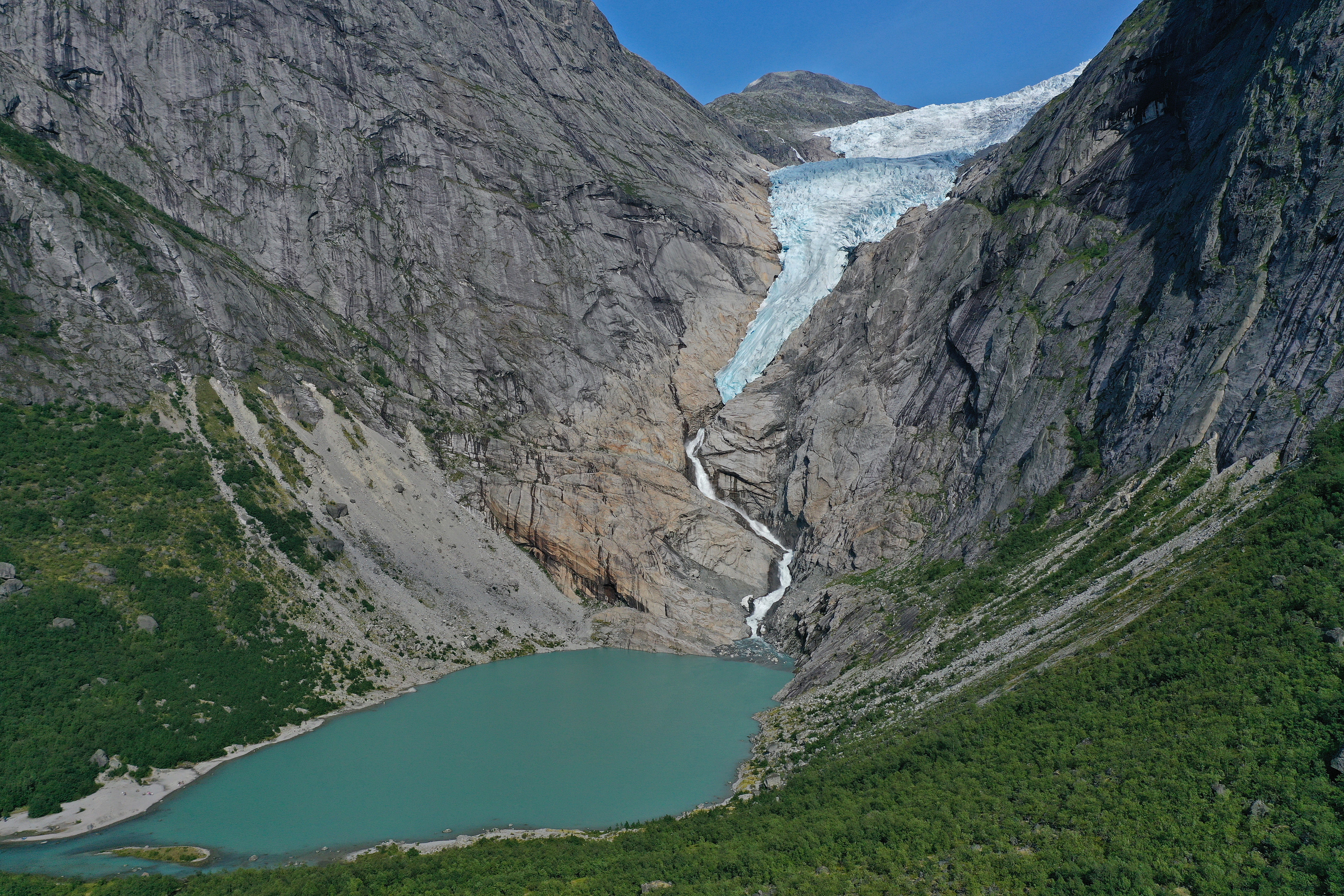Climate breakdown sees melting ice reveal 3,000-year-old shoe and ‘objects we didn’t even know existed’
But like ice which preserves them, scientists warn these ancient finds at risk of ‘disappearing forever’

In little more than 15 years, climate breakdown has been responsible for the disappearance of hundreds of square kilometres of ancient Norwegian glaciers and ice patches, according to the latest estimates.
While an ominous symptom of global heating, the retreat of this mountainous ice – often in remote and seemingly desolate locations – has also led to certain discoveries said to “shift the boundaries of our understanding” of a world long-forgotten.
Among the most extraordinary of the hundreds of items discovered frozen in time in Norway’s thawing mountain ranges are a size 36 shoe lost by an inhabitant of the Bronze Age more than 3,000 years ago.
The laced garment, which is around 27cm long, was discovered at the Langfonne ice patch in the Jotunheimen mountains in 2007, which is also home to the oldest discovery so far – an arrow shaft dating back 6,100 years.
Such discoveries, scientists say, are not only revealing traces of prehistoric human activity such as hunting and trapping, but are also bringing new insights into animal and plant life – and potentially even climate history.
“Objects and remains of animals and human activity have been found that we didn’t even know existed,” said Birgitte Skar, an archaeologist and associate professor at the Norwegian University of Science and Technology University Museum.
“They include everything from horse tack and clothing to arrows with tips made of shells, wooden shafts and feathers. Not a year goes by without surprising finds that shift the boundaries of our understanding.”
In a new report, Prof Skar and her colleagues detail many of these discoveries, including several whole mummified mammals, reindeer bones from 4,200 years ago still containing intact marrow, and a red-wing thrush whose internal organs have remained intact after 4,000 years in ice at the Dovrefjell mountain range.
While glaciers typically move and crush ancient organic materials held in Norway’s acidic soil, more stationary ice patches have been found to provide significantly better conditions for preservation.
But like the ice which had long preserved them, scientists warn that these precious finds are also at risk of being lost forever.
Only a few ice patches containing potential discoveries have been investigated systematically over time, and those in northern Norway have barely been studied at all.
Short-term financing has resulted in a lack of continuity in monitoring and securing artefacts from the ice patches, while the research which has been done on existing finds barely scratches the surface, scientists warn.
All the while, this potential knowledge is melting away at record speed.
A survey based on satellite images captured in 2020 showed that, of 10 selected ice patches with known finds, more than 40 per cent have melted, according to Prof Skar, who described this as “a significant threat for preserving discoveries from the ice, not to mention the ice as a climate archive”.
She is pushing for the creation of a national monitoring programme which uses remote sensing to systematically secure archaeological finds and biological remains from the ice patches, and which could also be used to collect glaciological data, “since the ice patches can provide detailed data on how the climate has evolved over the last 7500 years”.
Indeed, Prof Skar and her colleagues are starting to look at whether some of the ice could have survived since the last Ice Age – a possibility which she said “offers unprecedented opportunities to trace climate history and activity on these hunting grounds even further back in time”.
The oldest population group in Norway descended from reindeer hunters, who hunted close to the edge of the ice sheet in northern Europe and southern Scandinavia at the tail end of the Ice Age, Prof Skar said.
The Sami population – a people whose heritage spans thousands of years and who are still involved in reindeer-herding to this day – has also used these ice patches areas for a wide range of purposes, such as calf marking and milking, but their practices have been little-surveyed by researchers.
Discovering more about the Sami uses for these ice patches would probably shine further light on these areas’ significance, she suggested, saying: “Obtaining information from these tradition-bearers is urgent.”
Ice is one of the world’s least studied and understood ecosystems, according to Jørgen Rosvold, a biologist at the Norwegian Institute for Nature Research who was also involved in the report.
Dr Rosvold believes that the findings of animal and plant remains in Norway’s ice patches can show how species have responded to climate change and human disturbances in the past.
“Our finds show that the ice in the mountains has provided important habitats for many mountain species for thousands of years through to the present day,” he said.
“We used to think of the ice as desolate and lifeless and therefore not very important. That’s changing now, but it's urgent. Large amounts of unique material are melting out and disappearing forever.”





Join our commenting forum
Join thought-provoking conversations, follow other Independent readers and see their replies
Comments